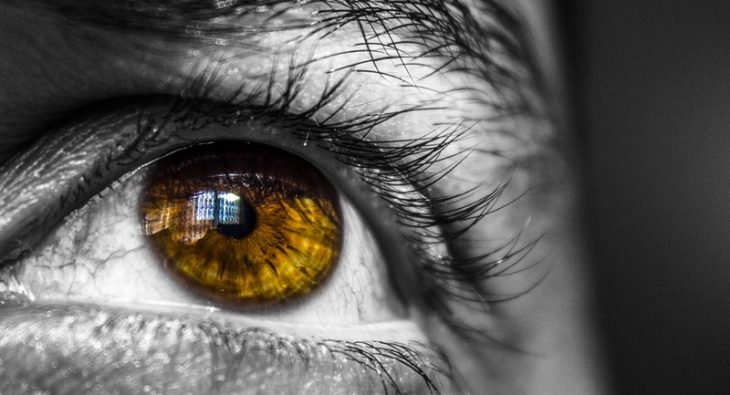What Determines Your Eye Color?
The iris is the colored part of the eye. Eye color is determined by two distinct factors: pigmentation of the iris and the scattering of light in the stroma of the iris.
Eye color is an inherited polygenic trait influenced by many genes. There could be up to 16 different genes involved in human eye color. The two main genes are located on Chromosome 15. When a child is born, melanocytes slowly begin to produce melanin. Most eye color changes happen in the first year of life. Eye color can also change during puberty, pregnancy, and after eye trauma.
There is a very large spectrum of eye color. The colors include amber, blue, brown, gray, green, hazel, red, and violet. Eye color can also be classified by light eyes, mixed eyes, and dark eyes. There is often a mixture of colors from different pigments. The color is determined by the concentration of melanin. Interestingly, in blue eyes there is no blue pigment. Blue eyes have a low concentration of pigment in the iris stroma. Brown eyes have a large concentration of pigment. Studies have shown that the prevalence of blue eyes in the United States to be approximately 33 percent among Caucasians. About 16 percent of the total world population has blue eyes.
Brown eyes are more common in Asia and Europe. Green eyes are common in Central Europe, Iraq, Iran and Turkey. Gray eyes are common in Europe, the Middle East, Afghanistan, and Pakistan.
There are some medical implications of iris color. People with lighter iris color have a higher prevalence of age-related macular degeneration. Eye color can also alert an ophthalmologist to certain medical conditions. The white part of the eye called the conjunctiva and sclera can change color. Some conditions such as melanosis can be benign. Yellowing can be associated with jaundice. Heterochromia is a condition where there is a difference in iris color between two eyes. This too can be related to trauma, medications, or a systemic medical condition.
The genetics, classification and ethnic origins of eye color is a fascinating science. Society has given eye color a lot of emphasis when it comes to appearance and beauty.
Many people opt to change or vary their eye color with colored contact lenses. These lenses should be worn with the same care as non colored contact lenses.
Frank S. Ashburn, M.D.
Board Certified Ophthalmologist
Washington DC






